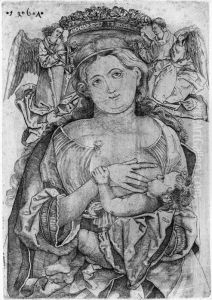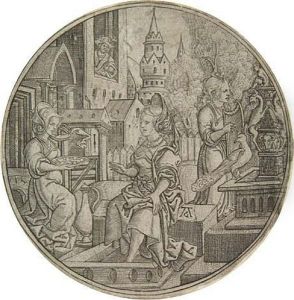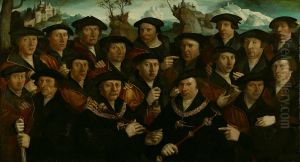Allaert Claesz Paintings
Allaert Claesz was a Dutch printmaker and draftsman, known primarily for his works during the Renaissance period in the Northern Netherlands. His exact birth and death dates are not definitively recorded, but he is believed to have been born around 1508 to 1510 and died approximately in 1555 to 1556. Claesz's contributions to art history are significant, particularly in the realm of printmaking, where he excelled in creating detailed and expressive works.
Claesz worked in a period marked by significant social, political, and religious upheaval, which is often reflected in the thematic elements of his prints. He was active in a time when the Northern Renaissance was in full swing, a period characterized by an intense interest in the detailed observation of the natural world and human form, as well as a burgeoning appreciation for classical antiquity. Despite these broader trends, much of Claesz's work is noted for its originality and individualistic style, setting him apart from some of his contemporaries.
Operating primarily out of Amsterdam, Claesz was part of the vibrant artistic community in the city. His works often depicted scenes from everyday life, biblical narratives, and occasionally, mythological subjects. He was adept in utilizing the technique of engraving, which allowed for fine detail and a great depth of expression in his prints. His ability to capture textures, light, and shadow, as well as his skill in composition, made his prints highly sought after during his lifetime and they continue to be studied and admired.
Unfortunately, much about Claesz's life remains a mystery, including his training and the extent of his artistic output. Records indicate that he was fairly successful and respected in his time, but the lack of comprehensive historical documentation has left gaps in understanding the full scope of his career and influence. Despite these challenges, Allaert Claesz's work remains an important part of the study of Northern Renaissance art, offering insights into the period's aesthetic sensibilities and the technical prowess of its artists.


